There has never been a better time to become a digital nomad and these 15 cities in Asia offer the best quality of life for professionals on the road.

Digital nomads in Asia (Photo: Marco Verch Professional Photographer via Flickr / CC BY 2.0)
The world has reopened but many offices remain closed. That poses a unique opportunity to anybody who can perform their job remotely. For increasing numbers of people, the chance to simultaneously build your career while travelling around Asia is finally a reality. Send an email over a bowl of tom yum soup in Thailand, Zoom-call colleagues from the edge of a Korean rice paddy, or research an essay from beside a Japanese temple; with the proliferation of better internet connections in the farthest-flung regions, you can be both intrepid and productive, paying your way around the continent as you travel.
When compiling this list of the best 15 cities in Asia for digital nomads*, we factored in a number of crucial quality of life factors, including the safety levels (particularly for women, people of colour and the LGTBQ+ community), quality of infrastructure such as internet, English language prevalence, long-term visa options, networking opportunities, co-working spaces and the average cost of living. As you’ll see, the options for working abroad, whether you’re travelling the entire continent or staying put in one city, are vast. And we always kept the most important thing in mind throughout: travel opportunities on your doorstep.
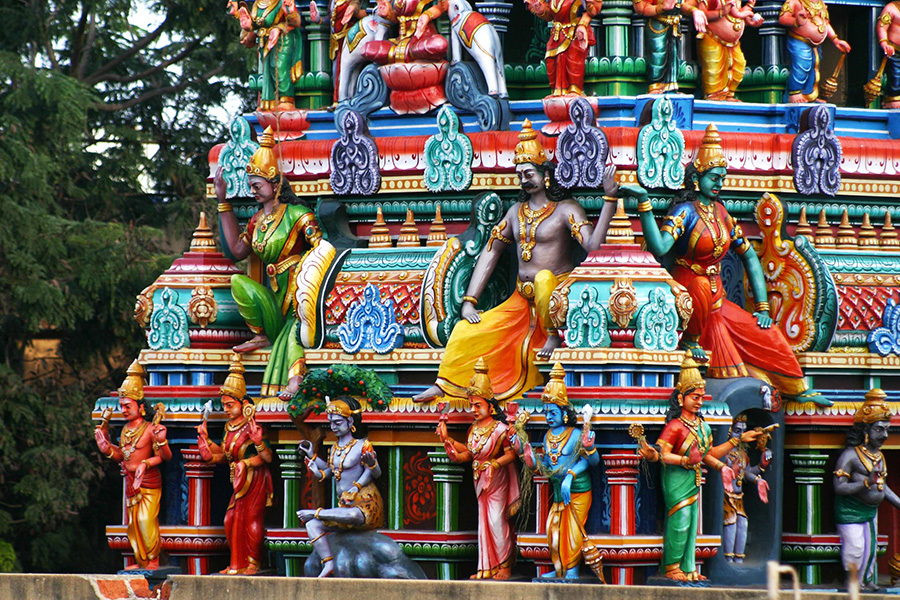
A temple in Bengaluru (Photo: Avinash Bhat via Flickr / CC BY-SA 2.0)
Bengaluru, India
Kicking us off on this alphabetical list is India’s high-tech hub, where everything from software development to outsourced call centres has turned Bengaluru (fka Bangalore) into a great place for those looking for fast internet connections and plenty of fellow professionals. While India generally scores very low on the environment, English language and equality scales, Bengaluru is slightly better, thanks to the advanced levels of education and global outlook. Bengaluru, which is known as India’s Silicon Valley, serves as a model for other Indian cities looking to advance. Palaces, temples and botanical gardens are among the many sights nearby.
Average cost of living** per month: $640
Canggu, Indonesia
Bali consistently ranks as one of the best places in the world for digital nomads. In fact, Canggu is rumoured to have the largest digital nomad community in Asia. The Indonesian island has a long history of tourism, thanks to its stunning beaches, temples and rice paddies. This has contributed heavily to improving local infrastructure and encouraging established expat communities to thrive. In July 2022, plans were announced for a digital nomad visa allowing remote workers from overseas to live on the island for up to five years without having to pay local tax, as long as their income is made outside of Indonesia. The whole of Bali is recommended, but Canggu’s speedy internet, dozens of coworking spaces and great opportunities to network make it extra special.
Average cost of living per month: $1,150
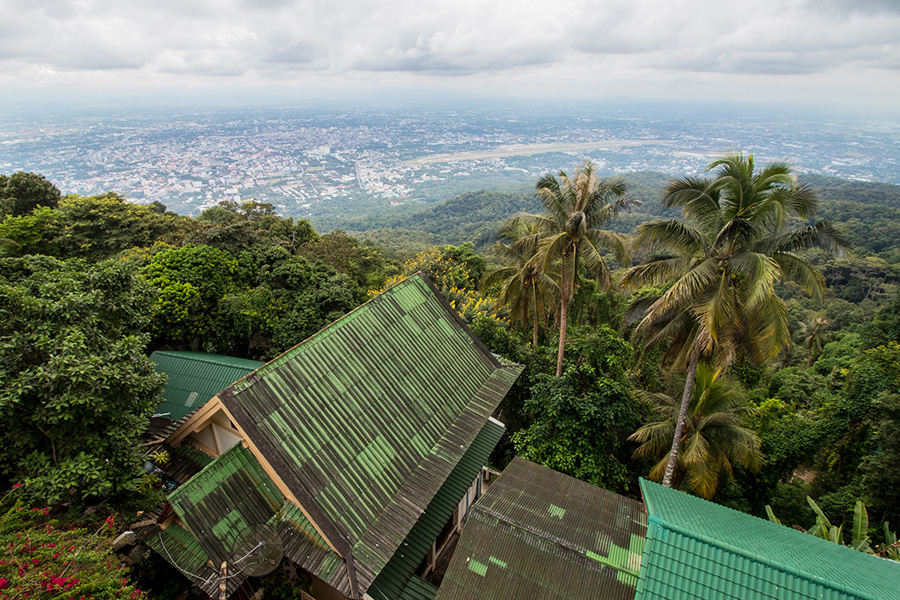
Overlooking Chiang Mai (Photo: Jorge Cancela via Flickr / CC BY 2.0)
Chiang Mai, Thailand
As with Bali, Chiang Mai has been favoured by digital nomads for many years already, which comes with benefits and drawbacks. You’ll have no problem meeting fellow expats who are doing the long term remote working thing. However, it’s also the low hanging fruit choice, meaning coworking spaces are in high demand (especially those with coliving options) and prices are generally higher than elsewhere in Thailand. If you’re happy to work from a coffee shop, then there’s no problem and the abundance of world class sights around the city, and national parks nearby, make it a great choice for that work-travel life balance. For visas, be sure you’re not doing anything involving Thai products or working in the country itself if you want work remotely in the country on a tourist visa (and please note all advice on visas here is unofficial and liable to change). Rumour is, a digital nomad visa for Thailand is in the pipeline.
Average cost of living per month: $930
Colombo, Sri Lanka
Although it has seen a little unrest recently, the British foreign office has cleared Colombo for travel again. Which is a relief, because the Sri Lankan executive and judicial capital city is rapidly gaining notoriety for its warmth and openness to the digital nomad community. Originally a year-long digital nomad visa was touted in 2021, although this has not yet materialised and you can instead seek an extension to your tourist visa of up to 270-days, which still provides a great opportunity to live in Sri Lanka for longer. Colombo also enjoys plenty of enthralling sights, modern coworking spaces and an excellent nightlife scene, perfect for meeting new people and having fun while working abroad on a tight budget.
Average cost of living per month: $650
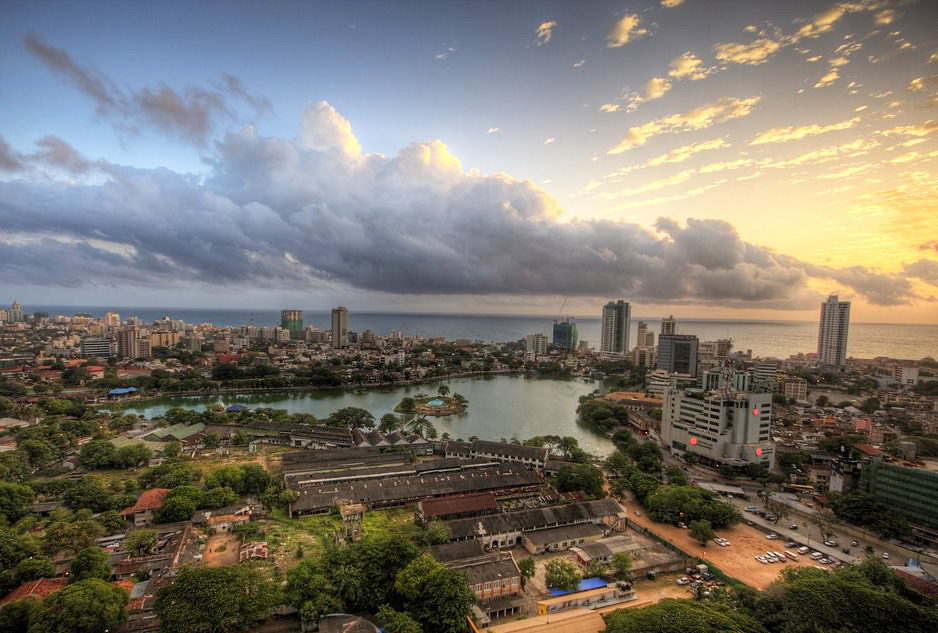
Colombo sunset (Photo: Amila Tennakoon via Flickr / CC BY 2.0)
Da Nang, Vietnam
Another increasingly popular place for digital nomads in Asia is Vietnam, where internet speeds and openness to otherness are on the rise. And although they might still seem comparatively lacking compared with other remote working hotspots, the under the radar vibe here means the cost of living is still low. Da Nang is particularly well situated for people who wish to explore further afield, with beautiful beaches, ruins and mountains offering a delightful variety of travel experiences. Plenty of modern coworking spaces can be found in Da Nang, so digital nomadism here is only going to grow further, increasing the chance of making connections with others. Definitely one to watch.
Average cost of living per month: $820
George Town, Penang, Malaysia
George Town, on the Malaysian island of Penang, has long been seen as one of the region’s most multicultural places. From the cuisine to the architecture, there’s a very notable east meets west atmosphere in George Town, with plenty of Malay, Chinese, Indian and European influence. This has not only attracted the attention of UNESCO, but also makes it a fun place to live. The former British rule means English is prevalent and decent, modern coworking spaces are increasingly common. Meanwhile, prices remain lower here than the main digital nomad towns in Thailand or Singapore to the south, but both countries are easily reached on public transport, making George Town a perfect base for exploring Southeast Asia. While Malaysia has no digital nomad visa, freelancers could work remotely (as long as you’re not employed in Malaysia) on a tourist visa, which better suits digital nomads who prefer to be on the move regularly.
Average cost of living per month: $710

Kek Lok Si Temple lanterns George Town (Photo: Ah Wei (Lung Wei) via Flickr / CC BY-SA 2.0)
Guangzhou, China
One of the biggest cities to make our list, Guangzhou isn’t always pretty, but it is a great place for professionals working remotely. The country is rapidly emerging as a leading nation in various fields, such as technology, and building connections there is important for any digital nomad with a start-up business and an ambition to grow. The city also has a number of sizable international cities for close neighbours, including Hong Kong. At the time of writing, visas were still restricted due to the ongoing Covid pandemic. Another major drawback to all Chinese cities is that they suffer from heavily restricted internet freedoms. Be aware that censorship of sites such as Facebook may impact your business.
Average cost of living per month: $1,280
Gyeongju, South Korea
You can guarantee that anywhere you post up in South Korea, you’ll find super-fast internet, if not at a rental apartment, then certainly in the local PC bangs, which are the preserve of gamers and digital nomads alike. And while a megacity like Seoul or Busan might be the logical choice, Gyeongju, with several UNESCO World Heritage Sites, is particularly special because it is the historic heart of Korea. Ancient kings and queens lie buried beneath grassy tumuli and you’ll find some of the region’s most beautiful temples nearby. Life in Gyeongju is also comparatively cheaper, without losing any of the amenities of the bigger cities. English levels throughout South Korea are higher than they might at first seem, particularly in this tourist-facing region.
Average cost of living per month: $1,390
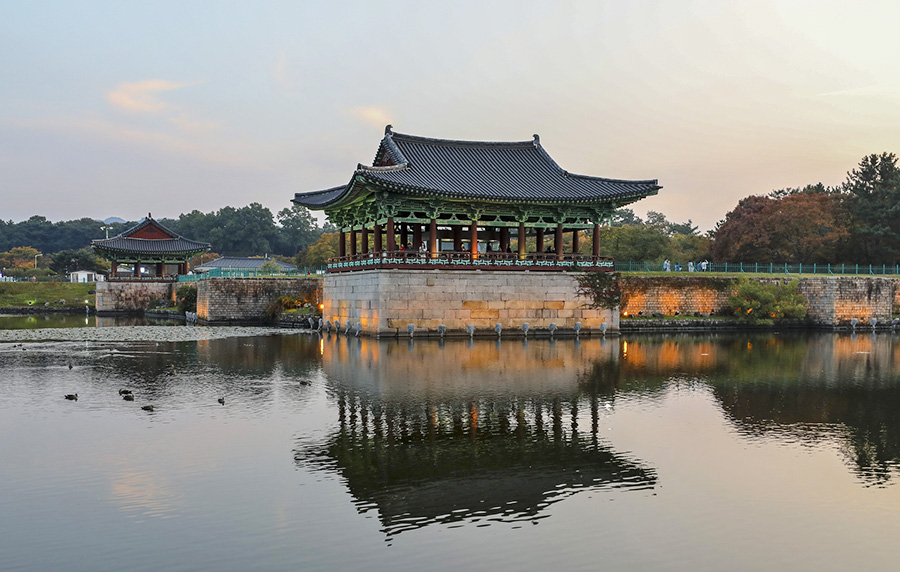
Donggung Palace in Gyeongju (Photo: bryan… via Flickr / CC BY-SA 2.0)
Jeju Island, South Korea
Perhaps a more obvious choice for digital nomads in South Korea than Gyeongju (see above), Jeju Island is South Korea’s volcanic, subtropical offshoot to the south, avoiding the hard winters of the mainland and enjoying pleasant temperatures the year round. While South Korea currently lacks a long term visa scheme for digital nomads, most nationalities can get a 90-day tourist visa, providing you’re not doing work in Korea or with Korean businesses. Jeju Island has three UNESCO World Heritage sites, great surfing and nature, and although you’re forced to take flights to get anywhere else, this is a perfect spot for shorter stays as part of a longer digital nomad journey around Asia. The best coworking spots are in Jeju City on the north side of the island.
Average cost of living per month: $1,550
Makati (Manila), Philippines
Manila is a bit of a Jekyll and Hyde city, in parts feeling as though it has all the downsides of city living with none of the perks. Makati is a very different beast, however. The financial capital of the Philippines, it has also been a key expat zone for decades. At the time of writing, US citizens can enter the Philippines visa-free for 59 days, with extensions of up to six months making it a great long term digital nomad hub. English levels are exceptional here, which makes appreciation of the revered friendliness of Filipinos all the more meaningful. The downside is poor internet quality, which for a megacity is no doubt among the worst in Asia still, and it gets even worse on the islands.
Average cost of living per month: $1,320
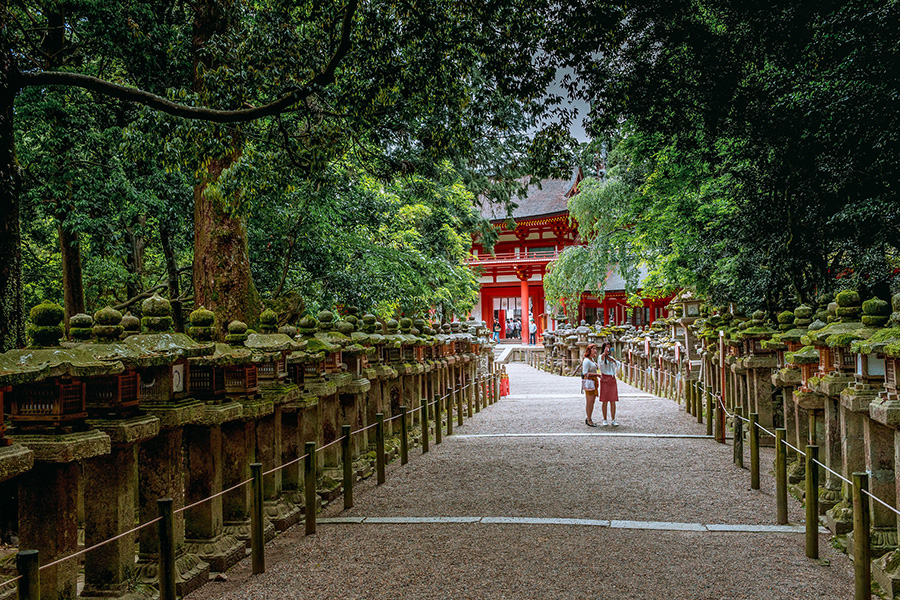
A forest temple in Nara (Photo: . Ray in Manila via Flickr / CC BY 2.0)
Nara, Japan
The deer in Nara are so tame that they will eat right out of your hand. Temples shrouded in thick forest are dotted around the hillsides and there’s an air of tranquillity and calm about the place. Add to that the lower cost of living than many of the cities in Japan, but easy access to the cities of Kyoto and Osaka, and Nara starts to look like a dream digital nomad destination in Asia for those seeking somewhere a little quieter. Visas in Japan are a bit of a minefield, separated into different types of employment and job type. Tourist visas are limited to 30 days for nationals of most countries, so plenty of research is necessary if you plan to stay for longer.
Average cost of living per month: $1,520
Phuket, Thailand
Similar to Chiang Mai in the north of Thailand, Phuket enjoys a reputation as a digital nomad haven, with plenty of coworking spaces and a burgeoning café culture. Where the city really comes into its own though is the quality of life. The nearby Andaman Sea is speckled with idyllic islands, there’s a vibrant nightlife in the city, and it’s the perfect place for digital nomads who want to stay for a short while before moving on to the next place. Krabi, Pha Ngan and Samui islands, Bangkok and Malaysia are within easy reach. Which is perfect because you’re likely to be visiting on a tourist visa which, depending on where you’re from, is likely to allow between 30 and 90 days, with extensions up to 270 days available if you seek out the Special Tourist Visa in advance.
Average cost of living per month: $950

Perfect beaches around Phuket (Photo: Earth-Bound Misfit, I via Flickr / CC BY 2.0)
Siem Reap, Cambodia
The chance to explore the sprawling ruins of Angkor Wat whenever you want is too good an opportunity to pass up for many digital nomads in Southeast Asia, which is why so many end up spending some time in Siem Reap. Much like Vietnam, Cambodia has seen a growing expat base, particularly of English and French-speaking groups, which has led to increased numbers of digital nomads setting up shop. But the country’s low cost of living is often indicative of shortcomings in certain infrastructural areas, such as internet quality. If you’re not looking for infrastructure akin to what you may be used to in the UK or USA though, the opportunities for meeting other travellers on a budget are well worth it. The US dollar is also widely accepted in Cambodia. Please note that tourist visas are limited to 30 days for many nationalities.
Average cost of living per month: $940
Singapore
We may have left many of the big modern cities off this list because they felt too obvious, but Singapore is one of the world’s ultimate digital nomad destinations right now. The downside is that you need to be earning pretty well to afford the exceptionally high cost of living. But if you’re lucky enough to be in that position, the country’s infrastructure, world class coworking spaces, large number of professionals, revered safety and lifestyle puts Singapore head and shoulders above most of its rivals. You really do get what you pay for. Tourist visas of up to 90 days are provided on arrival for many nationalities.
Average cost of living per month: $3,700
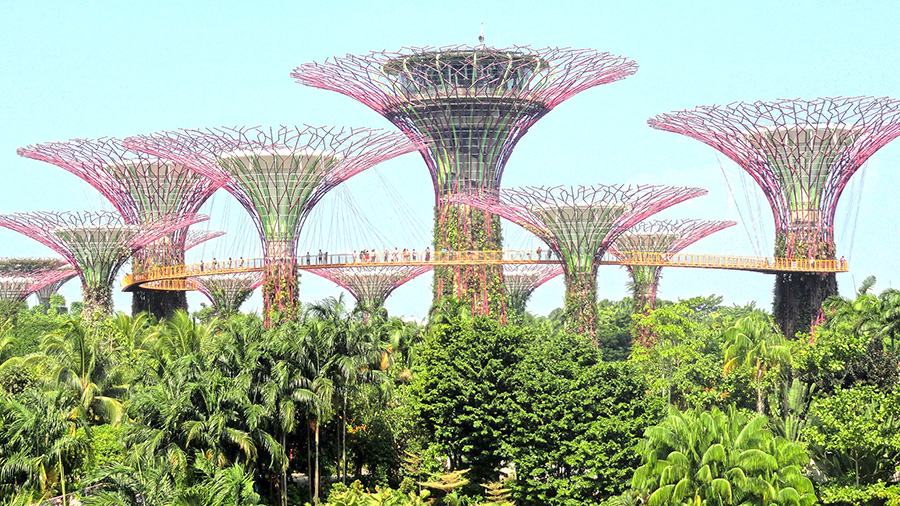
Inventive spirit in Singapore (Photo: Fabio Achilli via Flickr / CC BY 2.0)
Taipei, Taiwan
For anybody looking to set up in one place for a protracted period of time, Taiwan boasts one of the best visa programmes for digital nomads in Asia. The Employment Gold Card offers remote workers a stay of anywhere from one to three years, combining re-entry permits, alien residence and an open-ended work permit all in one. But there’s a catch: you must prove you can earn around $5,700 a month (amount liable to change) or be a highly trained professional (think PhD level). The benefits are there, though. If you don’t meet the requirements, Taiwan’s standard tourist visa is still 90 days for many nationalities. As with Singapore, English levels are exceptional, and freedom of speech and the acceptance of different life choices are, by Asia’s general standards, extremely good, which is why Taipei fully deserves the best score on our survey of top digital nomad cities in Asia.
Average cost of living per month: $1,630
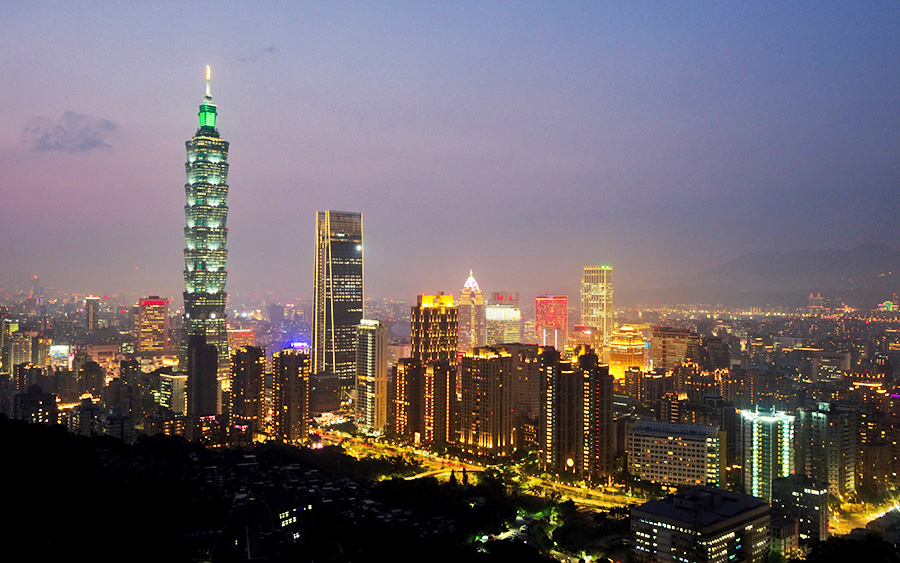
Taipei at night (Photo: Steffen Flor via Flickr / CC BY-SA 2.0)
* A note on the methodology: This is by no means the last word on digital nomad hotspots of Asia because each month brings with it new regulations and opportunities. Every individual’s needs will also vary. Firstly, capital cities from nations of over 25 million inhabitants were excluded. Practically any one of them would have safely made it onto the list, otherwise. We then took ten categories as our main criteria – average cost of living (food, transport, bills and rent); availability of long-term visas (every month it seems a new country announces a new visa scheme for digital nomads); safety: particularly for women, people of colour and the LGBTQ+ community; prevalence of the English language; co-working spaces & the presence of established expat or networking communities; freedoms of expression & speech; climate & the environment; internet speed; and proximity to good travel hotspots – and we scored each out of ten, with ten points being best. These categories were selected because they pose the biggest hurdles to quality of life on the road and, in some cases, make the difference between successfully completing your job remotely or not.
** Cost of living is based largely on figures from Numbeo and other sources, based on average rental costs and with additional allowance for paying coworking space fees.